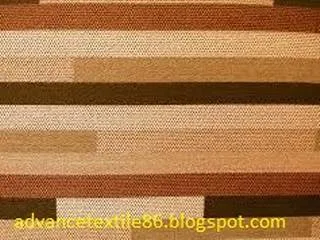Introduction
The word canvas is generated from the 13th-century Anglo-French canevaz and the Old
French canevas. Both can be accumulations of the Vulgar Latin cannapaceus for
"made of hemp", originating from the Greek κάνναβις (cannabis).
History
Replacing
canvas wood panels, oil has become the most common support medium for painting.
It has been used in Italy since the fourteenth century, but rarely. One of the
oldest surviving oils on canvas is the French Madonna, the angels of about 1410
at the Gemaldegalerie in Berlin. Panel painting was more common in Italy until
the 16th century and in northern Europe until the 17th century. Among the
leaders of this change were Montenegrin and Venetian artists; Venetian cell
canvas was readily available and considered the best quality. The first canvas
was linen, a strong enough brownish-brown fabric. Particularly suitable for the
use of linen oil paint. In the early twentieth century, the cotton canvas was
used, often known as "cotton duck".
What is canvas?
Canvas is a highly durable plain-woven fabric used for sails, tents, marquees, backpacks, shelters, and other items that require perseverance, as well as in fashion items such as handbags, electronic device cases, and shoes. It is commonly used by artists as a painting surface, usually extending across wooden frames. Modern canvases are usually made of cotton or linen with polyvinyl chloride (PVC), although historically it was made from hemp. It differs from other heavy cotton fabrics, like denim, as a plain wave instead of a double weave. Canvas comes in two main types: plain and duck. The threads of the duck canvas are woven more tightly. The word duck is the Dutch word for cloth, doek.
Properties of canvas fabric
1.
Canvas fabric is very strong.
2.
It is a durable fabric.
3.
It is a hard and sturdy fabric.
4.
It is a thick and heavy fabric.
5.
It is relatively stiff
6.
It is made from a simple weave.
7.
It is tightly woven
8.
It can be made from different fibers
9.
It is windproof
10.
It has stress and ladder-resistant ability.
11.
When treated properly, it is waterproof and flame resistant
12.
It can be blended with synthetic and natural fibers.
Type of canvas fabric
Canvas
mainly has two types- Plain and duck.
Other
types are-
a.
Dyed canvas
b.
Fire-proof canvas
c.
Printed canvas
d.
Stripe canvas
e.
Water-resistant canvas
f.
Waterproof canvas
g.
Waxed canvas
h.
Rolled canvas
Manufacturing process
Canvas
fabric is generally made from cotton or linen yarn. However other fibers such
as hemp, jute, polyester, nylon, and blends are also sometimes used to make a
canvas. The canvas has a very common weave; the weft thread only goes above one
warp thread and below the next. It is a warp-face fabric where more or less of
the warp yarns have more crimp around the straight weft yarn. To create art
canvases, the canvas fabric is usually treated with a layer or 2 of a gaseous
primer on the surface. If the canvas is left untreated, the fabric can keep the
paint wet, causing some to disappear and some to freeze on the surface.
Uses of canvas fabric
1.
Canvas fabric is used for sails, tents, marquees, backpacks, and shelters.
2.
It is used in the shoe industry.
3.
It is used in handbag making.
4.
It is used in making waterproof and windproof fabric.
5.
It is used in sturdy and heavy fabric.
Conclusion
The first canvas was linen, a strong enough brownish-brown fabric. Particularly suitable for the use of linen oil paint. In the early twentieth century, cotton canvas was used as a cotton duck. Linen is made up of high-quality materials and is popular with many professional artists, especially those who work with oil paints. The cotton duck, which is more fully stretched and has an equal, mechanical loom, offers one more economical alternative. The advent of acrylic paint has widespread popularity and the use of cotton duck canvas. Linen and cotton are derived from two completely separate plants, the flax plant, and the cotton plant, respectively.









0 Comments